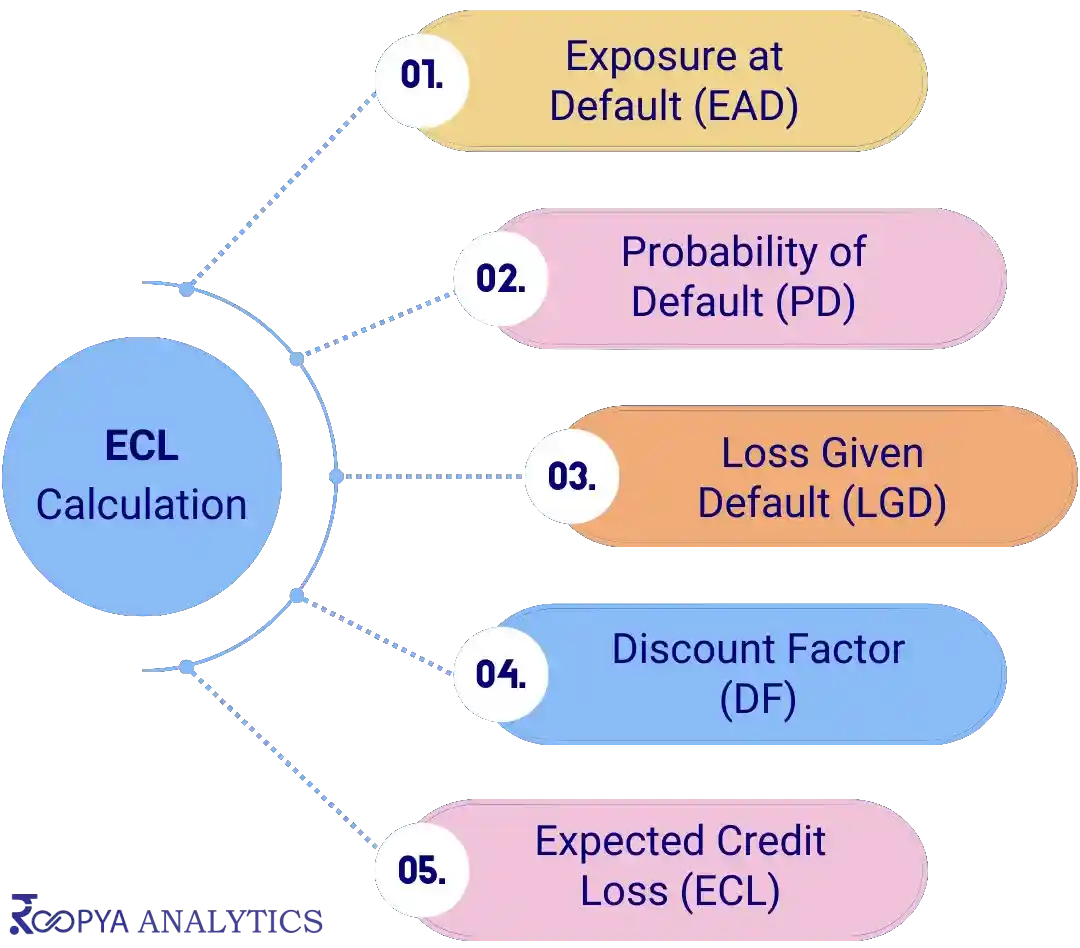| Standardized Approach |
Utilizes fixed parameters defined by regulatory authorities for PD, LGD, and EAD. |
Applying regulator-set PD and LGD for unsecured loans and calculating EAD directly from the loan
balance. |
Suitable for smaller institutions with limited data on loan performance, or for standardized
products like personal loans. |
| Foundation Internal Ratings-Based (F-IRB) Approach |
Institutions estimate PD internally, while LGD and EAD parameters are provided by regulators. |
Estimating PD based on internal credit scoring models for a portfolio of auto loans, using
regulatory LGD. |
Suitable for banks with more sophisticated risk management systems, especially for portfolios like
auto loans where PD can be closely linked to borrower creditworthiness. |
| Advanced Internal Ratings-Based (A-IRB) Approach |
Allows banks to use their own estimates for PD, LGD, and EAD based on historical data and models.
|
Developing comprehensive models to estimate PD, LGD, and EAD for a mortgage loan portfolio,
incorporating factors like borrower credit scores, loan-to-value ratios, and real estate market
trends. |
Best for large financial institutions with diverse portfolios (e.g., mortgage loans) and the
capability to develop and validate sophisticated risk models. |
| Historical Average Approach |
Calculates ECL based on historical loss rates, adjusting for current conditions and forecasts. |
Using average historical credit loss rates of past years for retail loan portfolios, adjusted for
current economic conditions. |
Applicable to institutions with long historical data sets but limited modelling capabilities. Good
for homogeneous loan types like standard retail or small business loans. |
| Probability of Default/Loss Given Default (PD/LGD) Models |
Uses statistical models to estimate PD and LGD separately, combining them with EAD for ECL. |
Implementing a logistic regression model to estimate PD and a regression model for LGD, applied to a
portfolio of credit card loans. |
Suitable for portfolios with rich data on defaults and recoveries, such as credit card loans, where
specific borrower and loan characteristics significantly impact PD and LGD. |
| Exposure at Default (EAD) Models |
Specifically focuses on estimating the EAD component, often using advanced modelling techniques.
|
Developing a model that predicts future drawdowns on credit lines for corporate loans, to accurately
estimate EAD. |
Particularly relevant for revolving credit products and corporate loans where the drawn amount can
vary significantly over time. |
| Monte Carlo Simulations |
Uses random sampling and statistical modelling to estimate the distribution of possible ECL
outcomes, incorporating uncertainty and correlations between variables. |
Simulating a range of economic scenarios to estimate ECL for a diversified loan portfolio, including
retail, auto, and mortgage loans. |
Ideal for complex and diversified portfolios where the institution wishes to understand the range of
potential outcomes and the impact of different economic scenarios. |



